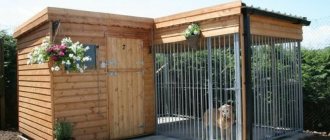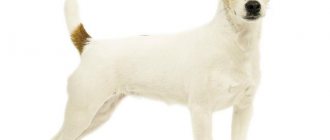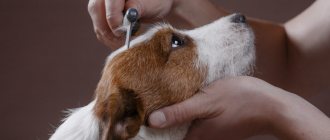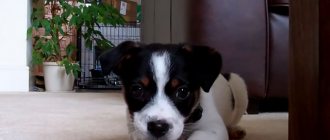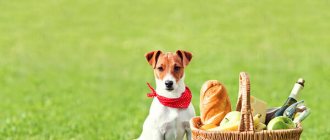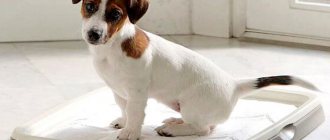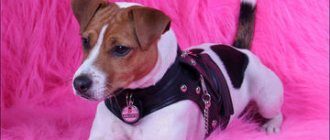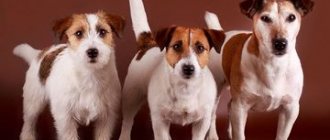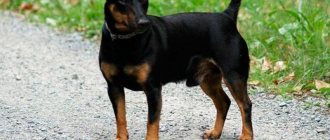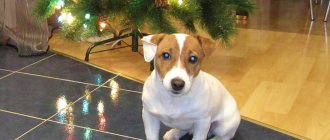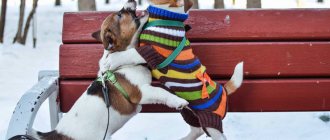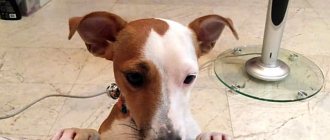Puppies begin to develop teeth at about two weeks of age. By six weeks, their mouths are filled with approximately 28 tiny razors. Sometimes they seem to be attracted to your fingers or toes like a magnet, especially when you are sleeping. Although this behavior is very annoying, it is completely normal for teething puppies. They, like all children (humans are no exception), taste everything, thus exploring the world around them. Your task is to teach them to behave correctly and not be mischievous.
Causes of malocclusion in dogs
The condition and shape of the jaw is an important indicator when assessing a dog at an exhibition.
If signs of deformation or a change in the defect in the dog’s teeth are detected, dog handlers will disqualify the representative of the breed. Therefore, if a puppy is purchased and raised for a show career and further breeding, careful attention must be paid to the teeth.
In order to prevent the formation of malocclusion, it is necessary to eliminate all the causes that contribute to the development of pathology of the pet’s jaw.
The main reasons for the formation of incorrect teeth position are:
- genetic predisposition. Dogs with improperly positioned teeth are discarded from breeding so as not to worsen the breed characteristics of future litters. Therefore, before purchasing a puppy, it is necessary to establish the fact that the descendants have the correct one;
- poor quality and unbalanced nutrition. A lack of vitamins and microelements necessary for the growth and development of teeth leads to disturbances in the structure of the teeth and jaw as a whole. To prevent pathology, the puppy must receive good nutrition appropriate for its age and be exposed to natural sunlight for up to two hours a day;
- metabolic disorders lead to improper absorption of nutrients entering the body and their subsequent deficiency. In addition to quality nutrition, the dog must receive daily physical activity in accordance with breed and age standards. It is also necessary to treat all diseases in a timely manner to prevent disruptions in the body’s functioning and subsequent complications;
- Violation of the schedule for changing baby teeth, in the form of premature eruption of molars when temporary teeth have not fallen out, leads to displacement and curvature of new permanent teeth. If deviations occur in the schedule for changing teeth, it is necessary to visit a veterinarian to correct the situation;
- injuries to the jaw, such as blows, strong pressure (when a dog digs its teeth into something and pulls hard), gnawing hard objects (for example, bones) also causes curvature of the teeth and jaw. The puppyhood period is the most important period in the development of a dog's bite. Until all of the dog’s single-rooted teeth grow out, it is necessary to observe safety measures to injure the jaw (do not play tugging with objects with the puppy, do not allow the puppy to gnaw on bones or other hard substances, try to avoid possible injuries). In case of jaw injury, you should immediately contact a veterinarian for examination.
When assessing a dog’s exterior, dog handlers always look to see if its jaws and teeth are connected correctly.
How to survive the teething stage
The process of changing teeth is very uncomfortable for the puppy. His gums hurt and itch when his “adult” teeth erupt. He constantly wants to chew on something to soothe the pain. Your job as a responsible owner is to give your dog something to chew on to make the process a little more comfortable. This will prevent you from searching for the “right” items on your own, be it your favorite pair of shoes, your new sofa, or your children’s toys.
Quality teething toys are made from hard nylon or thick rubber. Those that can be filled with water and frozen are especially recommended. Cold relieves pain from sore gums.
Fortunately, this process does not take long. By the age of six months, all of your Russell's teeth should have come out.
If you see a baby tooth still in his mouth at this age, tell your veterinarian - it may need to be removed.
Complicating the little Russell's training process is that 6 months is also the time when he will begin to experience some hormonal changes. This can provoke disobedience, as well as a desire to gnaw more on everything that comes across. Make sure he has enough toys and teach him through positive reinforcement that these are the only ones he is allowed to chew on.
Types of malocclusion
It is possible to detect jaw deformation in a dog starting at the age of 4 months, when the baby teeth change.
Dog handlers distinguish four main types of abnormal changes in dogs.
Straight
It is characterized by complete closure of the lower and upper incisors along one line. Leads to premature wear of the incisors. In this case, food is chewed poorly, which affects digestion and absorption of essential nutrients.
Children's undershot
Underbite is observed in puppyhood. It is characterized by a slight deviation of the lower jaw backward relative to the upper jaw. As a rule, it corrects itself when baby teeth are replaced with permanent ones.
Diagram of a dog's teeth seen from the front
Diagram of teeth seen from the side
Snack (progenia)
Overshot manifests itself in a slight protrusion of the lower incisors and canines forward relative to the upper ones. This deviation is the standard for the Boxer, Bulldog, Pekingese and Shih Tzu breeds. For other dogs, this is a pathology.
Underbite
It is characterized by a significant protrusion of the upper incisors in front of the lower ones. This pathology is clearly disqualifying for exhibitions and breeding.
An incorrectly formed bite can be corrected when the dog is between 5 and 12 months old.
Any deformations of the teeth and jaws negatively affect the digestive processes
How to choose a purebred Jack Russell Terrier
When choosing a puppy, the future owner must decide whether he needs the animal for participation in exhibitions or for the soul. In both cases, it is necessary to rely on the established standard in order not to fall for scammers who pass off purebred animals as purebred ones.
The main signs to look for when choosing:
- flat wedge-shaped skull with V-shaped ears hanging on cartilage;
- dark, deep-set, almond-shaped eyes;
- predominantly white with a few markings;
- correct “scissor” bite with even, symmetrical teeth;
- lips are pressed tightly together and have black pigmentation;
- the coat is smooth, hard or in between;
- missing profitable finger;
- the tail is set high and raised high when excited;
- The paws are small, muscular, the pads are dense, rounded, and not turned to the sides.
NOTE!
It is also important to pay attention to the dog’s behavior, otherwise there is a risk of acquiring an aggressive or too shy puppy, which can significantly worsen both the life of the animal and the life of the owner in the future.
Jack Russell Terriers are very intelligent dogs with complex personalities..
The future owner must adequately assess his abilities, have angelic patience and endurance, and then he will acquire not just a pet, but also a faithful friend.
Consequences
The dog has a number of consequences and complications, such as:
- digestive problems associated with poor quality of chewing food and insufficient processing of the food bolus with saliva, which leads to stool disorders, deterioration in the absorption of nutrients from food, and chronic diseases of the gastrointestinal tract;
- injury to the mouth cavity (tongue, gums, palate) during intensive chewing of food is the cause of the formation of inflammatory processes and various diseases, leading to a large number of complications;
- Constant drooling leads to the appearance of weeping eczema and dermatitis on the dog’s face.
When do puppies get their baby teeth?
Until the moment of change, babies have 28 milk teeth. Puppy dental formula:
| Incisors | Fangs | Premolars | |
| Upper jaw | 6 | 2 | 6 |
| Lower jaw | 6 | 2 | 6 |
Age period, in how many months do dogs change their baby teeth:
- in large and giant breeds the change should be completed by 5-6 months of life;
- For representatives of small breeds, this period is somewhat longer and lasts up to 7-9 months.
How to visually distinguish milk teeth from molars in dogs? Temporary - thin, not so powerful, whitish-transparent in color.
Correct and incorrect bite in dogs
Malocclusion in dogs has many dangerous consequences. Its presence is equated to a defect in most breeds and is taken into account when assigning an exterior rating. Animals with this deficiency cannot engage in show careers and service work, or participate in breeding.
Despite some difficulties, the owner is able to correct the situation with the help of restorative devices.
Normal teeth depending on breed
For large breeds, the norm is 42 teeth; deviation in any direction is a violation and requires the intervention of a specialist. And for decorative and medium-sized breeds, the number from 36 to 40 pieces is not a deviation. Below is a table of the normal number of teeth for different breeds.
| Number of teeth | Breeds |
| 38–40 | miniature pinscher, pug, chihuahua, welsh corgi, pomeranian |
| 40–42 | Samoyed, Bull Terrier, English Bulldog, Irish Black Spaniel |
| 40 | Chinese Crested Dog, Yorkshire Terrier, Beagle, Toy Terrier, French Bulldog, Toy Poodle, Brussels Griffon, American Hairless Spaniel |
| 42 | Newfoundland, Rottweiler, Scottish Shepherd, Husky, Laika, Dogue de Bordeaux, Cocker Spaniel, Collie, Bloodhound, Cane Corso, Greater Swiss Mountain Dog, Greyhound, Tibetan Terrier, Doberman, German Shepherd, Labrador Retriever, Australian Heeler |
What is dog bite
Bite is a feature of the contact of the surfaces of the teeth to each other with a tight closure of the upper and lower jaws. It is formed after the change of milk teeth and affects the speed of grinding of molars. In the absence of violations, the dentition retains its integrity even in old age.
The total number of teeth on the lower jaw of four-legged pets is 22, and on the upper jaw - 20. They include:
12 incisors designed for biting food;
4 fangs used to capture prey;
16 premolars involved in tearing and crushing food;
10 molars used for grinding food.
The display of teeth is compulsory for passing examinations in most canine training courses. It is recommended to practice it while still a puppy, as with its help you can promptly detect problems with the jaws. If the closure is incorrect, the bite in dogs is equated to pathology. For most breeds the norm is the same, but there are exceptions.
Occlusion assessment
Skeletal malocclusion. Mandibular prognathia
In a prognathic dentition, the mandible is longer than the maxilla, and some or all of the mandibular teeth are displaced rostral to the maxillary teeth.
Mandibular progeny
Mandibular brachygnathic bite, often called underbite, occurs when the lower jaw is shorter than the upper jaw (Figure 4)
Narrow lower jaw
Dental malocclusion
Anterior crossbite
is a clinical term used to describe a reverse scissor bite of one or more incisors (Figure 6). However, there is also likely a skeletal origin, as affected animals often develop a mandibular prognathic bite in the future. Common in medium and large breed dogs.
Posterior crossbite
is a condition in which the maxillary premolars (and sometimes molars) literally overlap the mandibular premolars and molars. If the animal has a comfortable and functional bite, then treatment is not indicated. However, if there is discomfort or injury due to a malocclusion, the offending teeth must be removed. Orthodontic treatment is usually not indicated for this pathology. Normal physiological cleaning of the teeth of the lower jaw by the teeth of the upper jaw does not occur, and therefore the molars of the lower jaw require more careful care due to the constant accumulation of dental plaque.
Rostral displacement of maxillary canines
– The upper canines are located rostral to the lower canines. Often they are turned perpendicular to their normal growth. It is believed that this is a genetically determined pathology. Persistent primary teeth can make matters worse (Figure 7).
Features of closure of the dentition in different breeds
Malocclusion in dogs and a tongue protruding from a closed mouth are disqualifying signs. A purebred animal with such defects receives no higher than pet class during exterior assessment.
There are 4 possible varieties in total. The norm is determined based on the structural features of the jaws and the location of the teeth, since their length and development differ depending on the breed of the quadruped.
Scissor-shaped
It is the norm for most breeds: terriers, Chinese crested, German and Caucasian shepherds, pinschers. In the dog with a scissor bite in the photo, the lower incisors are slightly covered by the upper incisors. The closed jaws do not touch, and a gap of 3 mm is formed between them. This relationship is called a “lock”.
This species is the most correct from the point of view of the physiology of a predator. It makes it easier to capture and hold prey, and also reduces the likelihood of developing oral diseases.
Straight
This type involves closing the jaws in a straight line. Due to this unnatural arrangement, the incisors quickly wear down, and food is chewed less efficiently. Despite the rapid wear of the front teeth, the canines, premolars and molars do not suffer from improper closure.
In most dogs, a straight bite is considered an incorrect bite. Exceptions include brachycephalic breeds: pugs, bulldogs, boxers. The thing is that this type is not independent. A straight or pincer bite is a type of undershot bite.
Underbite
Unlike overbite, underbite in dogs is always a pathology. Its alternative name is subnodularity. With this structure, a gap of over 3 mm is formed between the closed jaws. The lower incisors do not fit closely to the upper ones, and the canines are too close to each other.
The main danger of underbite is increased wear of the entire dentition and a predisposition to tartar. Because of this, teeth become loose and fall out before old age.
Snack
An underbite, or bulldog bite, is allowed in brachycephalic dogs. In appearance it is the opposite of an underbite. When overbiting, it is not the upper jaw that moves forward, but the lower jaw. In flat-faced pets, this anomaly is explained by the structure of the skull.
The disadvantage of underbiting is the tendency to early loss of teeth due to their uneven wear. Despite this, with a small snack, the health of the dentition and gums quite often remains until old age.
Dog dental care
And finally, a few words about caring for your pet’s teeth. As we already understood, teeth are one of the main vital organs of an animal. Therefore, you need to properly care for them.
To avoid the formation of tartar, constantly include carrots, apples, crackers, special bones and cookies for dogs in your dog’s diet.
Brushing your teeth weekly is also a good preventative measure. Take care of your pet's teeth, because this is the only way you can keep his teeth safe and sound until adulthood.
Take care of your pets!
Malocclusion in dogs and puppies
In addition to the types of malocclusion listed above, there are others in dogs. All these deviations combine possible consequences, as well as the reasons for their occurrence.
Why is it dangerous?
It’s not for nothing that the scissor-shaped appearance is called the anatomical norm. The presence of malocclusion in puppies and adult animals is dangerous due to the following complications:
chronic gastrointestinal diseases that develop due to poor quality of chewing food and insufficient wetting with saliva;
dental pathologies arising from frequent injuries to the gums, tongue, palate and teeth themselves;
dermatitis and weeping eczema, caused by profuse and constant drooling due to loose jaw closure.
It is also worth noting that the defect is inherited. For this reason, animals with an abnormal dentition structure are necessarily rejected from breeding.
Reasons for deviations
Malocclusion in a puppy can be congenital or acquired. In the first case, the defect cannot be corrected or prevented, but in the second, it all depends on the owner.
The main reasons for deviations include:
Genetic predisposition. The defect is inherited, but practically does not occur in yard dogs. This is due to the fact that in addition to genetics, breed is important.
Jaw injuries. Most often, puppies receive them, since adult animals are more careful. Children are injured when chewing bones and during active games of tug. In adulthood, injuries to the jaw occur due to blows from blunt objects.
Incorrect or poor feeding. Calcium plays an important role in jaw formation, so a lack of it in the diet can be fatal. The same applies to vitamin D. Its deficiency causes rickets, accompanied by softening of the bones. This affects not only the skeleton, but also the teeth.
Problematic replacement of baby teeth. Early eruption of molars when baby teeth have not fallen out leads to their deformation. This phenomenon is called persistence. In addition to displacement of the dentition, persistence increases the likelihood of injury to the mucous membranes.
The risk group includes representatives of small breeds, which more often than others suffer from persistence. To maintain proper jaw closure, their owners have to contact a veterinarian for surgical removal of excess teeth.
Types of malocclusion in dogs
Malocclusions in dogs include underbite, overbite and overbite. The difference between them is that the latter is recognized as a disqualifying characteristic without exception. In the remaining 2 cases, everything is less strict, and the snack itself is even prescribed in the standard for brachycephalics.
In addition to underbite, other types not listed above are also recognized as a defect:
Asymmetrical, or crooked. The main reason is persistence. It manifests itself in faster growth of one side of the jaw and often causes damage to the upper palate due to displacement of the canine teeth.
Front cross. Assumes correct closure of canines, premolars and molars. The problem lies in the lower incisors. Depending on the severity of the defect, one or more of them are located directly in front of the upper ones. Most often develops after games of tug.
Rear cross. In this case, the overlap occurs due to the fault of the maxillary premolars and molars, which overlap the lower ones. Rarely seen. It is mainly diagnosed in collies and Dobermans.
Open. Represents the absence of closure. It differs from straight teeth in that the teeth do not touch each other even after the mouth is closed. A free space forms between them, into which the tongue often falls out.
Retroposition (palatal adherence). The canines on the lower jaw move towards the center. They injure the upper palate and maxillary canines. The risk group includes Yorkshire terriers.
With timely treatment, all of the above violations can be corrected. The difficulty of returning teeth to their normal position increases with age.
Does the defect need to be fixed?
Minor deviations from the norm are quite acceptable. If they do not affect the quality of life, then you can do without correction. The only caveat is the need for constant monitoring by a veterinarian to avoid worsening the current condition.
It is important to note that even a scissor bite does not guarantee that dogs will not wear down their teeth. In addition to the listed defects, abrasion is also provoked by other reasons, so after 4-8 years the normal position of the jaws often changes to a pincer-like one.
Most often, such animals are simply excluded from breeding and are not allowed to exhibit, but if desired, you can try to correct the problem together with a veterinarian orthodontist. It is better to consult a veterinary clinic about the advisability of using special devices for teeth.
How to stop biting
Puppies naturally nip at each other when they play, and sometimes they don't realize how painful it can be. If they bite too hard, the other dog will likely let out a loud squeal, warning the puppy, "Hey, that hurts!" You can teach your puppy this too by making a loud, high-pitched "OW" sound if he bites. Then don't forget to reward him with something tasty or pet him for retreating.
If your baby starts chewing on his fingers or toes while you are playing with him, offer him a toy. When this doesn't work and he continues to chase you, stop playing so he understands that biting is not rewarded.
Never hit or physically punish your dog. If your pet seems to bite out of aggression (not during play), talk to a dog trainer about how to deal with this behavior.
Ways to correct the situation
Malocclusion in dogs is treated by a veterinarian orthodontist. The most optimal age for correction is 5-12 months. At a later age, the jaws are fully formed, which significantly complicates their displacement in the desired direction.
Treatment methods for four-legged pets differ little from those for humans. For correction, special designs are used, divided into removable and non-removable.
Mouth guards
Mouthguards are transparent acrylic products. When worn, they put pressure on the teeth, changing the dog's bite in the desired direction. To achieve the desired effect, it is necessary to use the structure on an ongoing basis - with the exception of eating and cleaning the mouth.
Mouthguards are replaced every 2-3 months or more often, based on the rate of dentition displacement. Their only drawback is their high price. For this reason, some owners use a cheaper analogue - a rubber ring. Despite the similar principle of action, the rubber product applies too soft pressure and only helps puppies.
Braces
Braces are also used to achieve a scissor bite in dogs. Unlike aligners, they are not removed throughout the entire treatment.
Dog braces are made of steel or its alloy with nickel. They consist of pins connected to each other by metal wire.
The size of the product is selected individually for each pet. Ready-made braces are attached to the teeth with dental glue, adjusting the force of their pressure by tightening or loosening the wire.
Despite the possibility of free absorption of food, non-removable devices have some contraindications. Their installation is prohibited when:
allergies to steel, nickel or glue;
caries, stomatitis, gingivitis, periodontitis and other dental diseases;
tumors and other neoplasms in the oral cavity.
When wearing braces, pay special attention to brushing your teeth. Due to the impossibility of removal, pieces of food quickly get stuck in the structure, attracting pathogenic microorganisms. For this reason, the frequency and duration of routine cleaning are increased.
Also, during treatment, it is recommended to avoid chewing bones and other hard objects that can lead to breakage of pins and wires.
Medial displacement of the lower canines
Treatment of bite pathologies (bite correction)
In order for orthodontic appliances to develop a force of pressure or traction on a certain area of the jaw, during their design it is necessary to create a fulcrum and a point of application of force. The fulcrum must be much more stable compared to the part of the dental system that is subject to movement. According to the laws of mechanics, a more stable support will remain in place, and the body at the point of application of the force (as a less stable one) can move. If the fulcrum and the point of application of force are of equal stability, then an interaction of forces occurs: both points are loaded to the same extent, but in the opposite direction. Separate groups of teeth can be used as support. In the upper jaw, the upper fourth premolar is used as a supporting tooth; in the lower jaw, the first molar is used, since these teeth are the largest in their arcade. When moving the incisors, the corresponding canines are used. When a tooth is exposed to prolonged pressure, bone tissue is rebuilt. At the point where the tooth root presses on the bone, lysis occurs, and on the opposite side of the root, new bone tissue is formed. As a result, the tooth moves in the direction we need. These two processes must be in balance, otherwise lysis will outweigh new bone formation. Most often, lysis still prevails over the formation of new tissue, so in most cases the installation of retainers is required after orthodontic treatment. They allow you to consolidate the result.
Complications of orthodontic treatment most often include pulpitis, external root resorption, tooth mobility, and pain. All of these complications usually occur because too much continuous traction was applied while moving the teeth.
Source
Hunting qualities
Like many other members of the terrier group, Jack Russell Terriers were bred to hunt small, burrow-dwelling game. Of course, terriers do not have enough speed and power for tracking and pursuit, but English foxhounds or other hounds did an excellent job with this task, but in penetrating an underground shelter and in a fight forcing the “fugitive” to leave it, the persistent and compact hounds have no equal strong guys.
It was already mentioned above that Jack Russell Terriers gained their reputation as excellent burrow dogs not for their ferocity, but for their clear voice and high intelligence. They not only understood the hunters’ strategy in a given situation, focusing on various horn signals, but also made their own decisions, which helped save energy without sacrificing efficiency.
Since their introduction, "jacks" have been an integral part of rural life in Great Britain. However, since 2002 in Scotland, and since 2005 in England and Wales, fox hunting has been officially banned, although for many it was part of the country's cultural heritage. Badgers are also now protected by conservation organizations. In southern Spain there is still a hunting area where it is possible to pursue game on horseback, but in most European countries the tradition is fading into history due to the lack of uninhabited areas with suitable landscape.
But innate instincts cannot be canceled as easily as centuries-old rituals, so four-legged “city dwellers” do not miss the opportunity during a walk to chase a passing cat or dig an impressive hole in the roots of trees from the nearest park.
Care and maintenance of Jack Russell puppies
Features of care
Jack Russell puppies are strong and healthy; babies of this breed do not need labor-intensive and expensive grooming, but the owner must carry out the following procedures regularly:
- Eye care . Wipe your eyes in the morning using a dry cotton pad or a regular paper napkin. A healthy puppy has almost no discharge from the eyes, so he does not need to use special solutions.
- Ear care . The ears are wiped once a week, cleaning the shell with a cotton pad soaked in a solution of Chlorhexidine.
- Grooming . _ The coat of a smooth-haired baby is combed with a special brush, which not only removes loose hairs, but also gently massages the skin.
- Paw care . Your pet's nails wear down naturally when he walks a lot on hard surfaces. Walking on gravel or asphalt helps strengthen the ligaments and wears down the claws. But if the claws grow so long that they interfere with the puppy’s walking, he begins to lame and the posture of his limbs is formed incorrectly. The claws are trimmed with a special guillotine, trying not to touch the nerve and blood vessel located just above the edge.
Content Features
The Jack Russell puppy is stubborn and able to make decisions on his own, has a wild temperament and requires as much attention as possible . Dogs of this breed cannot live in an enclosure or on the street, are not able to sit on a chain and love comfort. Apartment housing implies early training in neatness, and the puppy must be trained to use the toilet outside, without waiting for the end of the vaccination quarantine. Otherwise, the stubborn terrier will make puddles indoors for a very long time, and it will be difficult to wean him from this habit.
Walking and playing are little Jack's favorite activities . A puppy of this breed has enough energy to pester family members for many hours with a toy in his mouth, to strive to track down and catch up with the neighbor's cat and to eat any garbage. The kid will dig huge holes in the flower beds, tear at the bushes and try to tear the canopy over the swing in the garden, and also start quarrels with his fellow tribesmen on the playground.
The owners of a puppy of this breed can only dream of peace, since the pet requires almost round-the-clock attention . To prevent damage to things, as well as for the safety of the puppy itself, you need a crate where the baby will spend time in the absence of the owners. By locking a pet in it, owners can be sure that the fidget will not chew electrical wires or damage the upholstery of upholstered furniture.
Important! A crate for a Jack Russell puppy is a cozy home with a rug and toys, not a prison.
When walking, it is better not to let a puppy of this breed off the leash, as he may get carried away chasing a bird or a cat or get hit by a car. A roulette leash is perfect for walking, the length of which is automatically adjusted.
